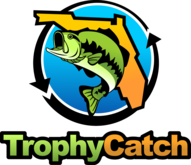 The 2016 spawn kept our TrophyCatch team very busy this year! As of May (eight months into Season 4) we have received 1,595 approved submissions, well on track to beat the 1,744 bass successfully submitted during Season 3! Don't wait until you catch a qualifying bass -- register free for TrophyCatch now to be eligible for the Phoenix Boats bass boat giveaway coming this December! Make sure all your friends are registered too -- then they have to take you fishing!
|
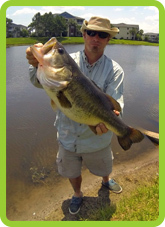 |
|
Here is how the 1,595 bass submitted so far this season stack up by Club category:
-- 1,340 Lunker Club bass (8 - 9.9 lbs)
-- 250 Trophy Club bass (10 - 12.9 lbs)
-- 5 Hall of Fame bass (13+ lbs)
-- Check out the Gallery of Catches at TrophyCatchFlorida.com
|
That brings the total number of approved TrophyCatch submissions to over 4,000 bass since the program was started in October 2012! Thanks to all our great partners, industry supporters and anglers like you who have made this incredible conservation program a success! |
|
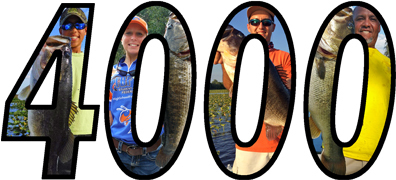 |
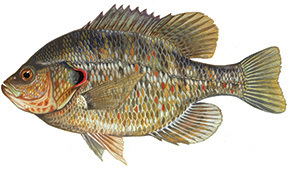 Size: The state record is 4.86 pounds. The Big Catch minimum qualifying sizes are 1.25 pounds or 11 inches for adults, and 1.00 pound or 8 inches for youth (BigCatchFlorida.com).
Identification and similar species: This panfish is easily distinguished from other "bream" species by the unique red or orange
margin on the gill flap (or opercle). It also grows larger than the other sunfish species, regularly exceeding a pound. The top of the body is dark olive, with
the sides and underside being yellow to orange in color (sometimes with a sprinkling of red spots).
Dark vertical bars may also be present.
|
Angling qualities: This popular sportfish is the largest of our bream and fights well on light tackle. Live worms, crickets and grass shrimp make
excellent baits. Lure anglers should use small jigs, beetle spins or spinners. Fly anglers can use almost any wet fly or nymph, although a small popping bug
remains the perennial favorite. Redears may be found spawning throughout the
spring and summer well into August, and locating a group of beds can lead to some fast and steady
action. This fish also goes by the name of “shellcracker,” due to its
preference for small snails and clams (and more specifically, the hard plates
in the back of its mouth used for breaking open these delicacies). Its feeding
habits make it likely to be found somewhat deeper and closer to the bottom than
other species.
Where to catch them: Redear sunfish are abundant throughout Florida, but some of the best locales include Lake Kissimmee, West Lake Tohopekaliga, Lake Istokpoga, Lake Panasoffkee, the Winter Haven South Chain of Lakes, Mosaic Fish Management Area, Lake Okeechobee and Everglades Water Conservation Areas 2 & 3.
Most readers are aware of the new black bass rules that are now in effect throughout Florida beginning July 1, 2016 (see Issue 5 for details). These rules were developed with a tremendous amount of public involvement and decades of research on the effectiveness of various regulations.
Data from hundreds of fish population samples were also considered in creating these new black bass regulations. One of the most important components of this data used to establish statewide size limits is length frequency, which is the size distribution of fish within a population. This information is vital to determining what size fish can be harvested with the least impact on the population.
How do FWC biologists obtain length frequency data from a fish population? Well, it starts with the fish! The illustrations below show a simplified version of how a length frequency graph is created and how that data contributes to establishing sound fishing regulations.
1. Above is a lake full of largemouth bass. As you can see, there are many different sizes. Of course, there are also sunfish, crappie, catfish and other species in the lake, but to manage bass it helps to look specifically at the length frequency of the bass.
2. Fisheries biologists sample the bass in the lake. There are various sampling methods that can be used, but electrofishing is one of the most efficient and also allows the fish to be caught, measured and then released unharmed (see "Shocking Truths of Electrofishing" at the Florida Sportsman FWC Freshwater Blog). Biologists can essentially "capture" the fish from the lake, but in the form of data -- the numbers go back to the lab, but the fish go back in the water!
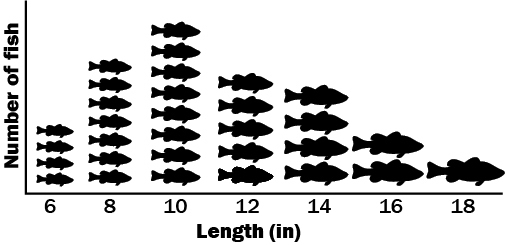 |
3. Back at the lab, biologists sort the fish (actually, the fish data) by size category. The example above illustrates this process as if the actual fish, rather than the data, have been sorted. Commonly used size categories are increments of 1 cm (0.4 inches) and 2 cm (0.8 inches), but in our simplified example we're going to use large 2-inch size groups. As you can see, this fish population has more 10-inch category bass than any other size group. You can also see that the fewest bass in the population are in the 16- and 18-inch size groups.
4. Of course, biologists don't use fish symbols. They use the bass length data to create a length frequency graph. This is how biologists are trained to look at fish population size distributions, and gives a better visual picture of the different sizes of fish in a bass population.
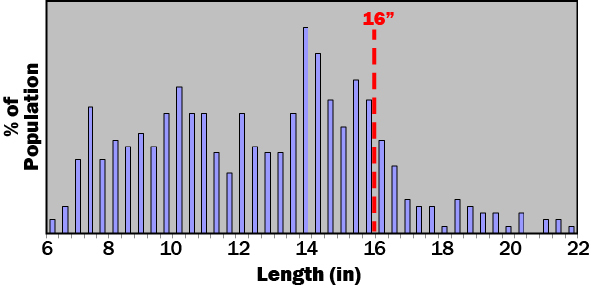 Those are the steps in creating a length frequency graph for a bass population. Above is an authentic graph generated from actual sampling data. These bass size distributions will vary from waterbody to waterbody, and also within the same water over time (especially following events such as a very good spawning year or a devastating drought). However, this graph is very typical of most Florida waters in that the vast majority of largemouth bass are less than 16 inches long. This is a good example of why the new statewide regulation for largemouth bass is "5 Black bass, only one of which may be 16 inches or longer in total length." With an abundance of smaller bass, you can also see why there is often no need for a minimum length limit.
The goals of the new statewide bass rules are to streamline regulations,
allow anglers to
keep smaller, more abundant bass, and protect larger bass desired by
most anglers. Length frequency information helps FWC
biologists determine which regulations are appropriate for the most enjoyment and best conservation of Florida's
bass.
 Jimmy Ray Tice from Cottondale caught a 5.2-pound shoal bass on the Apalachicola River in Gadsden County at 6:45 a.m. on May 27, 2016. The certified weight of 5.2 pounds broke the previous record of 4.85 pounds set by Stewart Mayeaux in September 2015. FWC biologist Andy Strickland met with Tice to get an official certified weight and measurements, and to have the application notarized. The official measurements were 21.33 inches in total length with a girth of 14.05 inches.
State Records require that a biologist verify the species and have a certified weight for the notarized application. The FWC maintains records for 33 freshwater species. Other state records can be seen at BigCatchFlorida.com/state-record.aspx. If you believe you have caught a state record, please contact the appropriate FWC Regional Office.
|
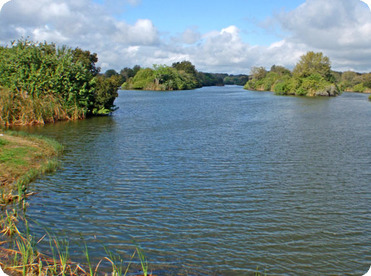 Size: 321 acres.
Location: Polk County.
Description: Saddle Creek Park FMA is located on the eastern edge of the city of Lakeland in Polk County. The park contains three partially reclaimed phosphate pits totaling 321 acres. Polk County owns and maintains the 734-acre park while FWC biologists manage the lake’s fisheries. With plenty of open bank fishing space, two fishing piers and five public boat ramps, anglers have easy access to these highly fertile waters. There is also a bait-and-tackle shop conveniently located nearby. Since the lakes were created using huge draglines, they have irregular bottom contours and steep banks near the shore. Depths can range from 3 feet to a maximum of 30 feet and often change dramatically. Aquatic vegetation in the lakes consist of small areas of knot grass, eelgrass, hydrilla and cattail. Several stretches of shoreline have dense overhanging vegetation, primarily Brazilian pepper, with other species of terrestrial and semi-aquatic trees and shrubs mixed in that provide good habitat for fish. Biologists have tagged and released over a dozen bass heavier than eight pounds in this FMA while anglers have caught and released 10 fish heavier than eight pounds that were accepted into FWC’s TrophyCatch program. Since the park is open daily from 5 a.m. until 10 p.m., anglers also have the option of beating the heat by fishing in the early morning, late evening or night.
For more information contact the FWC Southwest Regional Office at 863-648-3200.
|
To contact the Florida Freshwater Angler, email John Cimbaro.
|